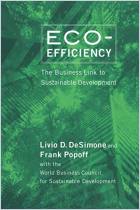Join getAbstract to access the summary!

Join getAbstract to access the summary!
Julie B. Zimmerman, Paul T. Anastas, Hanno C. Erythropel and Walter Leitner
Designing for a Green Chemistry Future
Science, 2020
What's inside?
Humans already know how to create useful new chemicals that don’t harm human health and the environment.
Recommendation
Synthetic chemicals improve and even save lives in countless ways. Yet, many can and do sicken and kill people and harm the environment. The good news is that it doesn’t have to be that way. By practicing basic principles of green chemistry – design with systems in mind, include sustainability in performance criteria, use renewable feedstocks, and avoid producing toxic substances – chemists and engineers can develop new, beneficial molecules while avoiding the harm that characterizes many compounds in use today.
Summary
About the Authors
Julie Zimmerman, Paul Anastas, and Hanno Erythropel are researchers at Yale University. Walter Leitner is a director at the Max Planck Institute for Chemical Energy Conversion in Mülheim, Germany.


















Comment on this summary